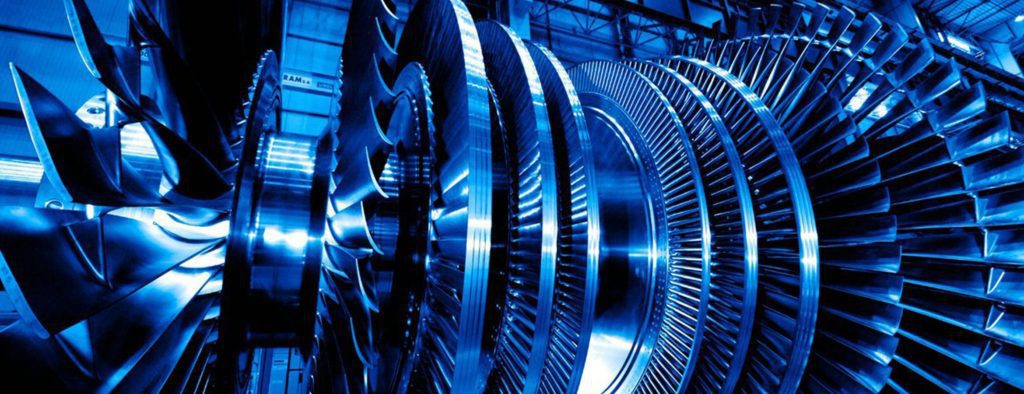Evaporative cooling pads are a cost-effective solution to increasing the power output of gas turbines in warmer areas or during hot summer months. Other methods of cooling inlet air can prove prohibitively expensive or inefficient. In areas where the air is hot and especially humid, a combination of evaporative cooling and other cooling methods may be necessary.
Hot Weather and Power Output
Gas turbines can produce as much as 20 percent less energy on a hot day than on cold days. On hot days, air is less dense. Power output decreases, because the flow of mass through the turbine decreases with hotter air. Although the turbine may be moving the same volume of air at a certain shaft speed, the power output will depend on mass flow of air. Hotter, less dense air provides lower flow of mass through the turbine, thus decreasing power output.
Evaporative Cooling
Evaporation converts liquid water to vapor in what is called a phase change. During this change in phase from liquid to vapor, water will either absorb or release heat. A pound of water changing from liquid to vapor will consume 1160 BTUs of heat. A hot breeze on a scorching summer day will feel cooler due to the evaporation of perspiration off the skin, thus absorbing heat and cooling the body. This is evaporative cooling.
Evaporative Cooling Pads
Evaporative cooling pads utilize the principle of evaporative cooling and are the most commonly used method of cooling gas turbine inlet air. The media is made of a wetted, cellulose fiber pad in a honeycombed design. When hot inlet air enters the gas turbine system, the wetted, honeycombed surfaces of the media cools the inlet air.
In areas without relatively low humidity, evaporative cooling pads can increase power output of gas turbines by as much as 15 percent. In especially hot and very dry environments, power output can be increased by as much as 60 percent.
High humidity can decrease the cooling effect of evaporative cooling pads. Even with high humidity, though, evaporative cooling pads can increase power output by as much as 10 percent. In areas with very high humidity, operators may wish to employ a combination of evaporative cooling and another cooling method, such as high-pressure fogging.
Costs of Evaporative Cooling
Evaporative cooling is a cost-efficient solution to cooling inlet air compared to other methods like a chiller installation. Evaporative cooling pads are relatively inexpensive, but they do require lower air velocities than other cooling methods.
Some facilities may need to retrofit air ducts to lower air velocity so that water is not stripped from the cooling media, causing wetting of ducts and possible compressor blade fouling. Retrofitting for evaporative cooling is generally inexpensive though, and operating costs of using evaporative cooling are low compared to other cooling methods.
Conclusion
Evaporative cooling pads utilize natural processes to cool inlet air, thus increasing power output of gas turbines in high heat environments relatively inexpensively. Engineered Filtration Systems’ evaporative cooling pads are specially coated to resist deterioration and prevent algae and minerals from adhering to the pad.
For more information about increasing power output with evaporative cooling, contact Engineered Filtration Systems online. Or, call us, at 1-800-796-4337.

